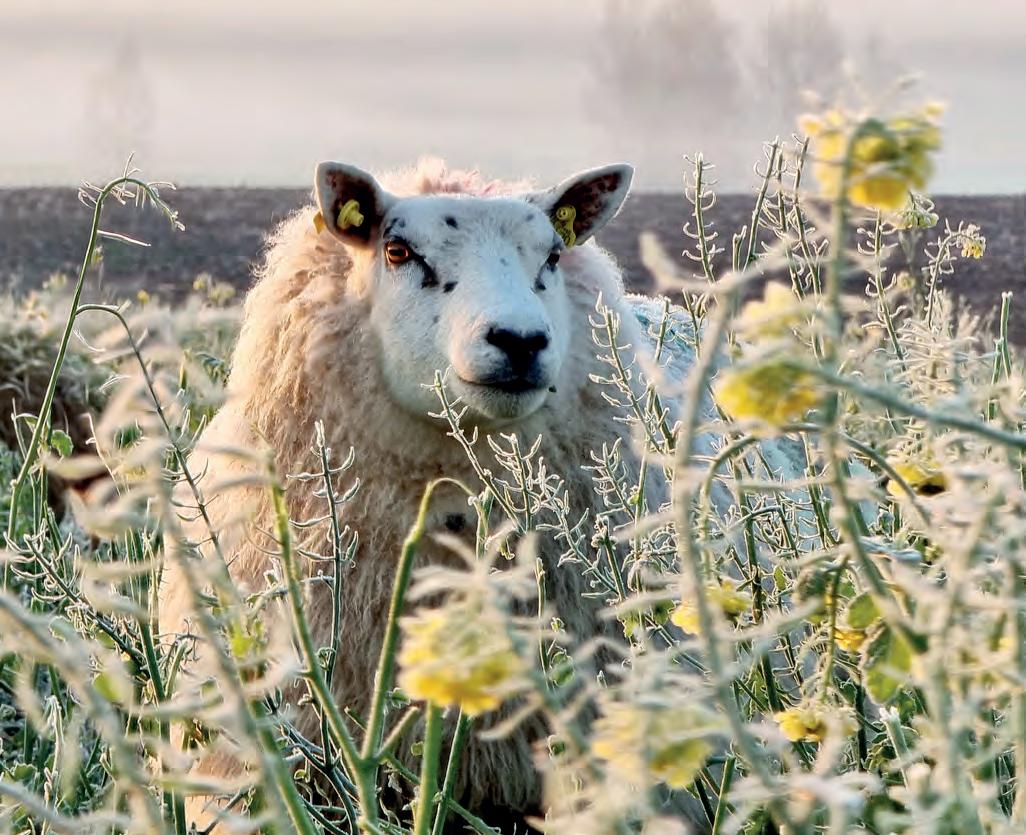

Farming with nature
Sustainability report 2024/25
The Ingleby vision
Our vision is to be leading regenerative farmers. We farm to produce good, healthy food, and also to protect the environment for future generations.
As farmers, we play an important part in solving some of the most pressing global challenges we face today.
We want to farm with nature – not against it. We believe farming done right can help the planet, and we aim to live up to this task every day, in everything we do.
We apply regenerative farming principles and constantly improve our soils. We preserve and enhance the biodiversity on our farms, and work towards sustainable consumption and production.
We treat our people, animals and communities with care and respect.
Because the way we choose to farm today echoes for generations.

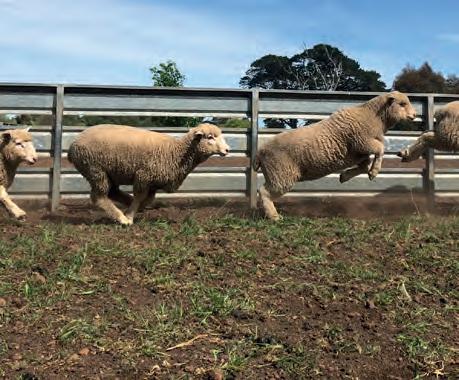
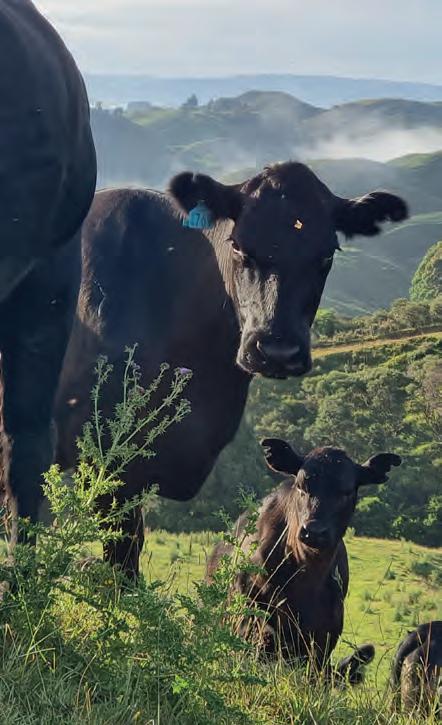
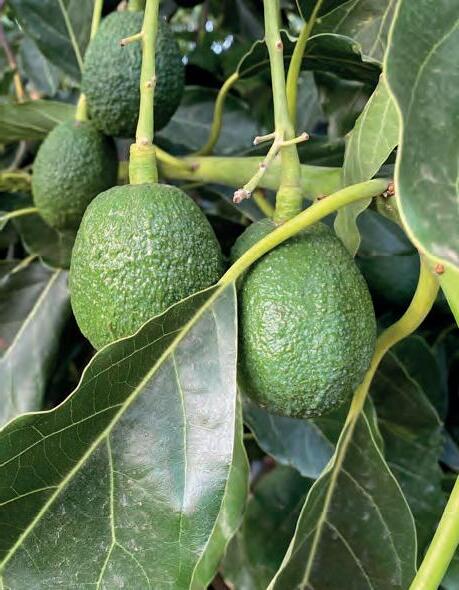

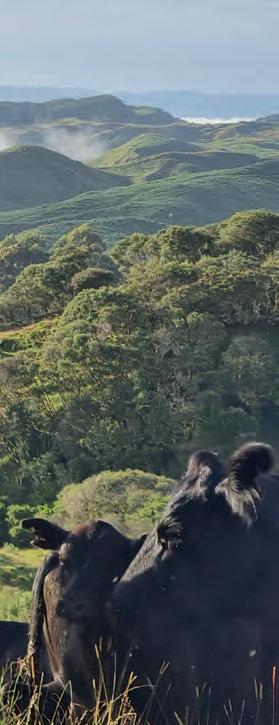





A message from our CEO
As long-term owners of land, we are aware of the impact we cause by our farming operations, and we are determined to make a positive long-term impact. We strive to profitably grow healthy products while also protecting the environment for future generations. In a nutshell, we want to farm for a greener future.
Merino sheep at Doña Maria, Uruguay
Minimising input
In our fields and orchards, we are continuously looking for ways to optimise water usage, be more energy efficient and release less greenhouse gases. And while inputs such as pesticides and fertilisers effectively help us increase our yields, we constantly must work to minimise our usage by applying them smarter, or by switching to alternative methods. We approach this minimisation process with outmost sensibility to not risk the profit we are farming for. Meanwhile, we are also pursuing strategies to increase yields without increasing inputs per kilo yield. With the combined effect of these two strategies, we are striving to produce more with less.
Regenerative aspirations
In our aspiration to become increasingly more regenerative and farm in cooperation with nature, we continuously challenge our own practices to be aligned with regenerative principles. However, nature is a deeply interconnected system, where every element depends on others, so as we move further into regenerative farming, complexity and unpredictability grow — but that is exactly what makes farming so challenging and so motivating for us.
In these fast-paced times, it is tempting to leap to large-scale regenerative conversions to gain swift results. Yet acting too abruptly or too massively, will most certainly put healthy yields or crops at risk and very likely cause an unintentional setback in soil health, hence increasing dependency on inputs.
Incremental steps
Therefore, we are deliberately taking incremental and sensible steps to carefully increase nutrient availability and health in our soils, while maintaining a responsible yield and preserving biodiversity. To orchestrate these steps across all our 43 farms, we work with five categories: our soil, our animals, our nature, our communities and our climate. To assess our progress with each category, we use internal data, accumulated over 15 years. This data functions as our internal benchmark and KPIs for progress and is the core of our Farming with Nature report.
I hope you will read on to learn more about how we farm.
“The way we choose to farm today echoes for generations.”


Anders Holger Noergaard CEO

Welcome to our Farming with Nature report
Since Ingleby Farms was founded in 1998, we have remained dedicated to sustainable farming. In 2019, we committed ourselves to regenerative farming principles – or as we call it in daily terms: Farming with nature.
As hands-on farmers, we spend most of our time in the fields and orchards caring for our crops and livestock – and we are proud to be producing nutritious food, feed and fibre. Food production in general is a significant contributor to climate change, and the largest driver of biodiversity loss around the globe. So, how we farm has never been more important!
For us, regenerative farming is meaningful. It is all about restoring and enhancing the health of our ecosystems while producing food. Our most important asset in this matter is our mindset. An innovative, curious mindset, not afraid of failures or setbacks. A mindset craving continuous learning and improvement, leading us to share both our successes and our missteps with peers and like-minded.
We embarked on regenerative farming years back, and since then we have accumulated a wealth of insights. Some tools and trials were highly effective, some showed moderate success while others proved less fruitful. In the initial years, we reaped the benefits of “low hanging fruits”. For example, spot spraying reduced our use of synthetic pesticides. However, following these initial achievements, we are now carefully considering our next step along our journey towards regenerative farming. It is surely a rugged road with strong potential but also twists and turns, ups and downs.
As we are farming for future generations, we want to make a lasting impact on our land: beautiful farms in living landscapes with rich biodiversity, good water quality, healthy soils with high levels of sequestered carbon and strong resilience to climate change. We measure and track production and sustainability data to provide reliable insights on these efforts. Read on to find out more about our achievements during the 2024/25 financial year.
“To be a regenerative farmer, you need to have the right mindset.”


Rasmus Bredo Juul Christoffersen Chief Operational Officer

Our commitments
Our vision of becoming increasingly more regenerative is not an easy tick-off, but something that requires hands-on work and perseverance. We are pushing boundaries, investigating and testing technologies. To orchestrate our efforts across all farms, we have articulated five commitments. This publication is structured around them and provides insight into how we apply them operationally.
Our Soil Practice regenerative farming
Our Animals Raise healthy and ethically treated animals
Our Nature Protect and enhance biodiversity
Our Communities Grow our people and communities Our Climate Farm for a greener future
• Build healthy, living soils
• Minimise synthetic pesticides
• Minimise synthetic fertilisers
• Responsible water stewardship
• Open-range and pasture-fed year-round
• Ethical veterinary practices
• World-leading best practice for livestock handling
• Enhance and protect the natural environment
• 10% natural habitats
• 1% water habitats
• Monitor threatened species and ecosystems
• Zero harm work culture
• 2% of work hours in training
• Balanced gender diversity
• Support and engage with local farming and environmental groups
• Climate positive
• Zero waste and zero landfill
• Transition to renewable energy

Doña Maria, Uruguay: daughter of foreman caring for calf
Our values
To us, values are more than words – they are the principles that shape how we work and collaborate. They guide our decisions, define our culture, and reflect what matters most to us as a team. Our values serve as a compass that keeps us aligned and focused. In an unpredictable world, these values help us stay true to who we are and what we stand for.
Family
We are a family of farmers. Family values are an integral part of our farming operations and daily life.
Innovative
We aim to constantly be one step ahead. We work with leading advisers to be on the forefront of the farming technology and practices.
Trustworthy
We respect rules and regulations. We deliver what we promise and on time. An Ingleby product is always of the highest quality.
Hands-on
We are hands-on farmers. We spend most of our time in the fields caring for our crops and livestock.
Regenerative
We believe in regenerative farming. This means farming with nature to grow people, nature and profits in the long term.
Assessing materiality
In an increasingly complex and interconnected world, it is crucial for us to understand and manage the factors that affect our sustainability and long-term business capability.
Although our company is only subject to the European corporate sustainability reporting directive (CSRD) in 2027, we have conducted the initial double materiality assessment (DMA) for 2024/251
Through a combination of stakeholder interviews, workshops and desk research, we found more than 200 statements related to environment, social or governance (ESG) topics. These statements were then categorised as either financial risks or opportunities to our operation – or as positive or negative impacts caused by our operation. Then, they were individually scored in terms of scale and probability, and then finally reported as a weighted average within each ESG subtopic. The outcome is summarised in the matrix on the following page.
The 10 CSRD ESG topics
Environmental
• E1 – Climate Change
• E2 – Pollution
• E3 – Water and Marine Resources
• E4 – Biodiversity and Ecosystems
• E5 – Resource Use and Circular Economy
Social
• S1 – Own Workforce
• S2 – Workers in the Value Chain
• S3 – Affected Communities
• S4 – Consumers and End-Users
Governance
• G1 – Business Conduct
1 Our double materiality assessment was conducted by Grant Thornton in accordance with EFRAG’s Materiality Assessment Implementation Guidance
Double materiality assessment
A structured methodology used to identify and assess environmental, social and governance topics through a value chain. These topics are assessed from two distinct perspectives:
• Financial materiality: how do they affect our financial performance and value creation.
• Impact materiality: how do our activities impact the environment and society.
The duality of the assessment helps stakeholders gain a holistic view of both inward-facing and outward-facing factors crucial to our long-term sustainability. Ultimately, this assessment will inform our strategic decisions.
Impact materiality
Our impact on people and planet
Financial materiality
Sustainability topics’ impact on our financial performance
DOUBLE MATERIALITY MATRIX
Key take-aways
Instantly noticeable from the chart, not many of the ESG topics come out as financial material to our operations. We credit that to our highly diversified product and location portfolio which mitigates potential impacts that might be material to one crop or location.
Looking at the other axis of the matrix, many topics skew towards impact materiality. Our operations do affect many things around us – positively or negatively – so it is critical that we understand our responsibility and act according with our commitments and regenerative aspirations.
Each of the ten ESG topics has more granular subtopics. Of the 37 ESG subtopics2 offered by the directive framework, the following three passed the threshold for being material to our operation from both the financial and impact perspectives.
2 Full list of subtopics available at www.efrag.org
E1.1 – Climate change adaptation
E2.3 – Pollution of soil
E3.1 – Water
These three subtopics represent universal conditions, transcending our diversification strategy. We are already working diligently with them as climate, soil and water are a central part of our commitments. In the coming year, we will initiate work to define how to best harvest the data points required by CSRD; especially on climate change adaptation where we currently have few data points. On soil and water, we have harvested a great deal of data for 15 years, and we are pleased to share excerpts of them in the sections Our Soil (page 24) and All about water (page 28) to offer insight into how we currently measure and track our progress.
Tracking for a greener future
A main principle of our Sustainability Memorandum, originating back to 2006, is that “a farm in good heart is easily recognisable”. While that is still true, not all conditions of a farm are visible at first sight.
To satisfy our craving for continuous learning and improvement, we track 50 sustainability metrics. Tracking helps us understand what works – and what does not work. We use the data to make our farms even better – from soil, livestock and crops, to climate, biodiversity, safety, education and community outreach.
With 15 years of data, our annual sustainability reporting is anchored in how we think and do things in Ingleby Farms. It helps us uphold our values and affirm our commitment to farm for a greener future.
Data-driven sustainability reports
All our farms generate yearly Production & Sustainability Reports containing heaps of data points. These reports help us retain a farmwide perspective, remain systematic, coordinate our actions and predict outcomes. We use an evidence-based approach to monitor and record our water and soil quality, our biodiversity, animal health and welfare, as well as safety and training. We record our inputs such as fertilisers, pesticides, water, energy and veterinary medicines as well as how efficiently we use these inputs. And, of course, we measure our harvests and yields.
We quantify all these indicators to create evidence-based feedback loops between how we farm, and how our farms fare. This data-driven approach allows our curious mindset opportunities to continuously learn more about the wonderfully complex biological systems on the land we steward and farm.
UN Global Compact
We comply with UN Global Compact’s principles on environment, human rights, labour and anti-corruption.
Farming can play a significant role in advancing The Ten Universal Principles on environment, human rights, labour and anti-corruption. We recognise that we can both promote and advance the Sustainable Development Goals (SDGs) while also taking inspiration in defining our own model of regenerative farming. Our farming with nature journey and internal goals are aligned with six of the UN Sustainable Development Goals; see how in the illustration on the next page.
O U R COMMUNITIES
OURCLIMATE
Renewableenergy&biofuelsCropGHGemisssions Cropsoilcarbon sequestration
Monthly temperature Chillhours Solarradiation
Energyuseefficiency
Suppliers codeof conduct Regenerative commitments Ingleby's Values Guidelines
Nutrition content Forestry & timber Calories produced Dairy production Meat& wool production Cropproduction
Crop&grazing diversity
15 YEARS OF REPORTING
Monthly rainfall
Childrenlivingon-farm Gender ratio Staff stability
Person-hours/ha
Donations&charity Traininghours
Accidents&near-misses
LTIFRhoursonleave
WeatherEnergy&CarbonCompliance Health&SafetyBiodiversity&Nature
Soil Production Communities
Invasive pest management Farm environmental plans Bird monitoring Significant/threatened species Natural& aquatic habitats
OUR NATURE
Minimumtillage&no-till Covercropping5-yearreferencesoilsampling
Streamhealthmonitoring
Water Animalwelfare Pesticides Fertilisers
Groundwaterdepth
Ground&drinkingwaterquality
Water footprint
Water use efficiency
Reproduction rate
Mortality rate
DairyUseofpharmaceuticals cowhealthindicators
Pesticideapplication
Biologicalcontrol&beneficialinsectsPesticideuse benchmarking Ingleby bannedlistof pesticides
Organic fertilisers& soil amendments Nitrogen-use efficiency Nutrient application & removal
50 SUSTAINABILITY METRICS
12 REGIONAL SUSTAINABILITY REPORTS ANNUALLY
37 CROPS, MEAT, WOOL, DAIRY AND FORESTRY
Our Farms
We are long-term owners of land. As of 30 June 2025, we own and manage 43 farms and forests across nine countries and four continents. Our worldwide number of hectares adds up to 103,593 hectares of which we protect 31% as natural habitats, including 2.7% as water habitats. We own and manage arable land, pastures, horticulture and forests.

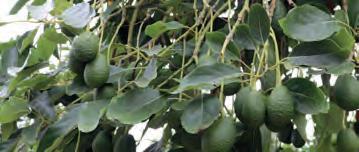


Avocados Seeds Table grapes Blueberries Milk Cattle
Row crops Sheep Mixed forestry Pistachios
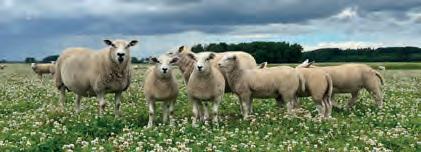
Romania
hectares 3 farms, 3 forests

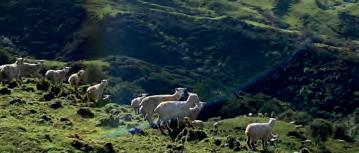

Growing food
We believe that our focus on creating healthy soil will not only improve our yields but also create healthy plants and products. We believe in a correlation between the level of soil health and the quality of nutrients being cycled: A nutrient-rich soil yields a more nutrient-rich plant, yielding a more nutrient-rich crop; ultimately providing better health to the person who consumes the crop3
With our 150-year perspective on farming, we aim to increase the nutritional value of our products and the amount of calories that we produce, but without expanding the area of land used for farming and with a decreasing amount of inputs.
Our teams work year-round to produce sustainable seeds, grains, vegetables, fruits, nuts, meat and milk of premium quality. During recent years, we have become specialists in growing high-quality, nutrient-dense crops such as blueberries, avocados and pistachios. We have also added hazelnuts and macadamias to our nut portfolio.
This year, we grew 37 different crops, compared to merely 11 crops, 14 years ago. The increasing trend in number of crops is a deliberate development from our side. It adds complexity to our production, yet it yields powerful benefits to our soils, water use and biodiversity. It even helps in reducing synthetic inputs. The complexity of running such a diverse production is small compared to the benefits we gain.
During 2024/25, our food production totalled 233,968 tonnes covering crop, livestock and dairy production or 633,811 million calories. This can feed 694,587 people for a year based on an estimated daily intake of 2,500 calories per person.

3 Empirical data and research are needed to support our belief.
Avocados in Peru
Calculated by hectares, we can feed one person for an entire year on 0.12 hectare of land, equal to 1,200 m2 or approximately the size of an Olympic swimming pool.
Since we started measuring, we have increased our tonnes of food produced per hectare by an average of 1.7% per year for crops and 2.3% for meat and milk. At the same time, we have reduced pesticide use on the cropping and horticultural productions by 4%, and applied 19% less synthetic fertilisers per hectare against the three-year benchmark (2016/17 – 2018/19).
We contribute the fact that our yields are increasing, while our synthetic inputs are decreasing, to our approach of farming with nature. Some effect is also derived from increased efficiency in water use, fertiliser use and technology. We are excited to see if this encouraging correlation will become even more significant as we continue to learn from our many fields trials during the past few years.
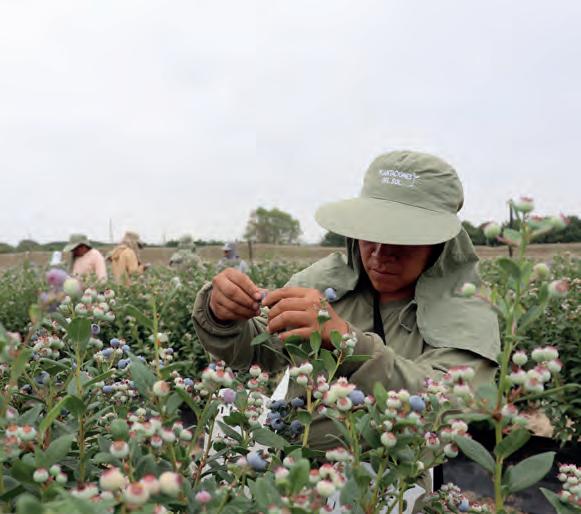

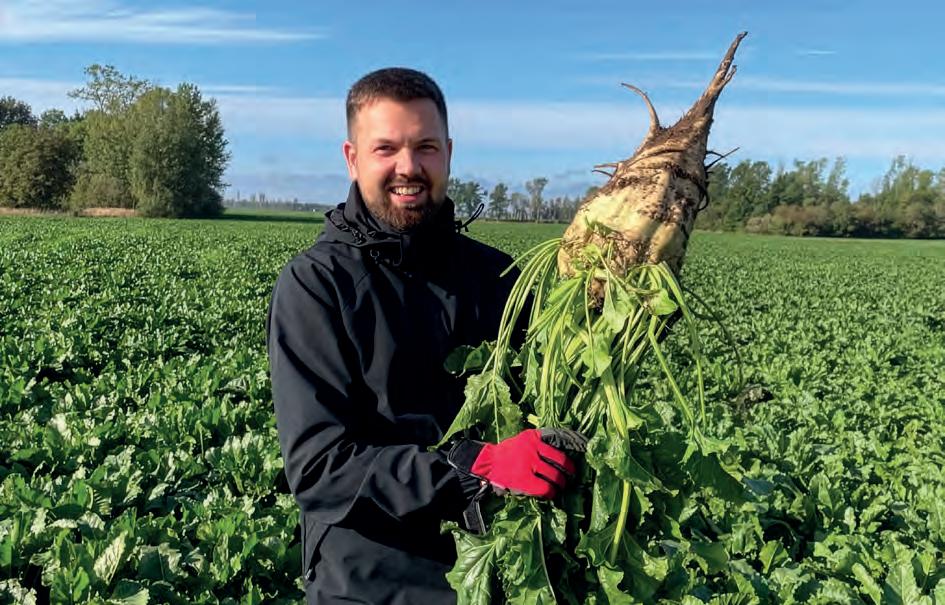
Blueberries in Peru
Corn in Uruguay
Sugar beet in Latvia
Our certifications
As farmers, we play an important part in feeding the world. We believe farming done right can help our planet, and we aim to live up to this task every day, in everything we do.
We are confident in our internal agricultural and social best practices, so we do not guide our operations by external certifications. Instead, we carefully select certifications to provide assurance to our external partners and customers of our farming practices. Below we proudly present a selection of our current certifications.
EU Organic
Encourages responsible use of energy and natural resources, maintenance of biodiversity, preservation of ecological balances, enhancement of soil fertility and maintenance of water quality.
SMETA





Aligns social audit standards and monitoring practices to ease the auditing burden on suppliers by sharing reports and driving improvements in supply chain labour standards.
Safe Quality Food
The SQF Certificate is awarded for adherence to a rigorous and credible food safety and quality program, recognised globally across the food supply chain.
HACCP food safety
Ensuring that a food safety plan meets the internationally accepted Codex standards for risk assessment and hazard control.
GAP Animal welfare certified
Requires farms to abide by defined protocals regarding pasture, weather protection, weaning and transportation.
NEVER EVER Beef Program
An on-farm grass-fed assurance standard, outlining stringent animal welfare and quality management practices for accredited cattle producers.
SPRING



GLOBALG.A.P.
Enhances agricultural practices by minimising the environmental impacts, reducing chemicals use and ensuring a responsible approach to worker health and safety as well as animal welfare.
SPRING
Sustainable Programme for Irrigation and Groundwater use certification is an add-on to the GLOBAL G.A.P. certification. It entails an annual water audit and best practices in water management.
Grasp
Assesses social risks in primary production.
FSC®
The Forest Stewardship Council® is an international nongovernmental organisation that promotes environmentally appropriate, socially beneficial and economically viable management of the world’s forests.
LEAF Marque
An environmental assurance scheme, showing that food has been grown sustainably and with care for the environment.

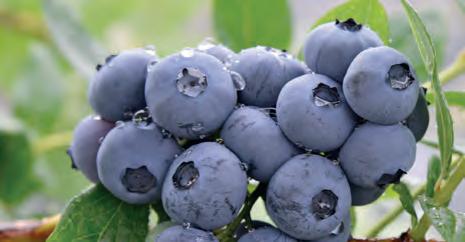

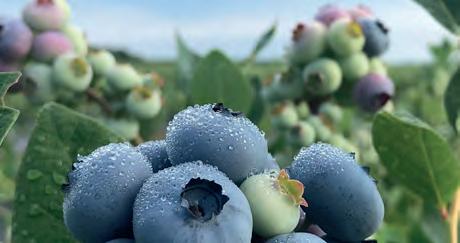










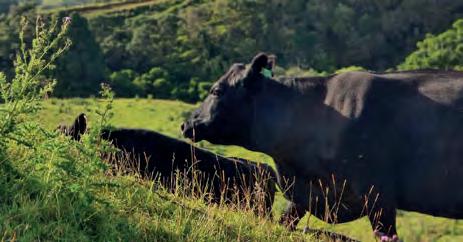




Blueberries
SPRING
Pagiriai farm
Pistachios

Soil
Regenerative farming
We are inspired by five main principles of regenerative farming, all aiming to enhance soil health, water infiltration and retention, and carbon sequestration.
Minimum soil disturbance
Nature did not intend for soil to be flipped upside-down. Tillage disrupts the natural structure of soil and negatively affects the living organisms in the soil that would otherwise help create natural soil fertility. Spongy, crumbly, moist, sweet-smelling soil full of worms and microbiology is an effective, yet delicate, foundation for farming. Hence, we strive for no-till or minimum tillage when and where possible.
Armouring the soil
Covering bare soil with live or dead organic material protect it from wind and water erosion. We strive to armour our soils by growing cover crops or leaving residues from prior crops on top of the soil. By covering our soil this way, we also keep moisture content in the soil and prevent soil temperature from rising. This also reduces the risk of erosion.
Diversification
We strive to compose a variety of crops that complement each other by having different attributes. Some crops sequester carbon, some fixate nitrogen. Some are winter crops, others summer crops. Even different types of roots play a role. Each attribute contributes to the soil’s nutrients and physical properties, thereby maintaining soil health. Also, different plants function as homes for different insects, leading to increased biodiversity.
Living roots
Soils are most healthy and thereby productive when soil microbes have access to living plant materials. A living root provides a food source for beneficial bacteria and promotes the symbiotic relationship between plant roots and mycorrhizal fungi. Living roots also help to reduce soil erosion. Therefore, we grow cover crops between our cash crops whenever possible and we have increased our area of perennial crops.
Integrating animals
When grazing is well managed, animals can help sequester carbon and stimulate plant growth. Animal droppings stimulate the soil microbiology, and rotational grazing stimulates plant growth for higher yield and more sequestered carbon.
37
DIFFERENT CROPS GROWN
17%
ARABLE AREA WITH COVER CROPS
58%
ARABLE AREA IS NO-TILLAGE
35%
ARABLE AREA IS MINIMUM-TILLAGE
12%
ARABLE AREA HAS DOUBLE CROPPING
Nutrient cycling
Soil microbiology plays an essential role in decomposing organic matter and cycling nutrients that would otherwise not be available to fertilise the soil and feed the plant. In order to do so, the microbiology need food, water and oxygen.
To induce a beneficial microbiology, we first strive for a healthy soil structure with space for air and water. By reducing tillage, we attract bacteria, fungi and earthworms. Earthworms create tunnels through the soil, making space for oxygen and water underneath the surface. This helps the soil retain rainwater or irrigated water longer.
Food for the microbes is provided by having a permanent plant cover on our fields. This ensures that there is always plant roots in the soil on which helpful fungi can attach and initiate a beneficial relationship with the plant. The fungi help the plant by providing nutrients and the plant releases sugars to the fungi through the roots, practically feeding all the microorganisms beneath them. By growing cover crops between cash crops, we extend the period where our soil benefits from these sugars.
Our soil also benefits from the organic matter from plant residues which slowly decomposes and integrates into the soil, storing carbon in the soil. This method is dramatically more effective when combined with no-till as tilling would nullify the efforts by releasing carbon to the air.
When soil microbes thrive, they help stabilise the soil with their branch structure, and by producing substances which glue the soil aggregates together. This helps our initial efforts related to healthy soil structure.
Without soil microbes, essential nutrients would rapidly be locked in a form that cannot be used by others, and the nutrient cycling would be compromised. Therefore, we strive for a wide array of crops and cover crops to increase the diversity of our soil microorganisms.
Farming with a 150-year perspective
Our long-term commitment is at the core of our family values: we are farming not only for ourselves, but for future generations to thrive and prosper.
Therefore, we are willing to invest in decisions, actions and innovation where the value only arises after extended periods of time. For us, it makes sense to improve our soils and nature, to minimise our impact on the climate and environment, to support local communities and be good citizens.
While we work towards the long-term success of our farms, we never lose sight of the present-day profitability.
We hope that our legacy will be healthy, thriving farms in flourishing communities and environments. We hope that future generations will look back at what we started and appreciate the condition of the lands we pass on to them.
After all, we are all merely stewarding our lands for the generations to come.


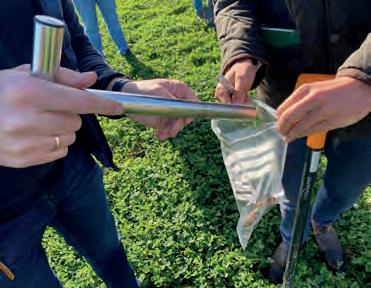
Assessing soil health
Healthy soil is the single most important factor for growing plants successfully. We continuously take measurements of our soil to understand its health, so we can farm accordingly to its needs. In-field, we regularly test for soil compaction, pH and water retention capacity, and we send off soil samples for laboratory analysis of nutrients levels.

No-till in Argentina
An alternative to tillage is to not cultivate the soil. This is referred to as no-till. In this practice, you seed directly into the soil that is still covered by the residues from the previous crop instead of first preparing a seedbed. By seeding directly into crop residue, the soil is never left bare which is helpful in retaining soil moisture, and it minimises the destruction of habitats for underground life.


No-till corn after hairy vetch cover crop at San Ignacio farm
Corn planted after hairy vetch cover crop at Don Aurelio farm
Collecting soil sample for lab analysis
Measuring soil compaction
Assessing water retention capacity
Rolling hairy vetch at San Ignacio farm

All about water
Next to soil, water is our most precious natural resource. It irrigates our crops and pastures, provides fresh drinking water for livestock, and supports the most diverse habitats on our farms.
Rainwater is essential for plants to grow, but often, the quantity and timing of the natural rain fall are not optimised for farming, hence a need for effective water management.
To supplement natural rainfall, we irrigate with ground water, surface water or retained rainfall. Irrigation stabilises and increases yield, ensuring our farms’ ability to endure extreme weather conditions like prolonged drought. Irrigation also improves nutrient use efficiency as plants are more efficient at taking up nutrients when the soil is moist. On our cropped land, irrigation enables us to increase the number of crop rotations per year as harvest can be brought forward.
Water use
We irrigate 9,565 hectares across Argentina, Australia, Lithuania, Peru, Romania, USA and Uruguay. Irrigated area equals 18% of our total crop and dairy area. In the fiscal year 2024/25, we applied 44,396 megalitres of water to our fields, orchards and pastures (which equals 464 mm per hectare).
We do not exceed the annual renewable supply of water, always maintaining a water surplus, whether it comes from surface water or groundwater.
Water habitats
We have an obligation to protect water and aquatic habitats for ourselves, our neighbours and future generations.
Water habitats are epicentres of biodiversity and are an integral part of our long-term farming with nature approach. They support healthy thriving ecosystems on our farms, benefiting both production and conservation.
Where possible, we create additional water habitats by digging shallow wetlands of variable size, shape and depth, forming diverse aquatic habitats for a variety of animals and plants.
Currently, water habitats make up 2.7% of our total land area: 2,799 ha.
Pond on Tormac farm in Romania
Recycling water
Adverse weather events are becoming more frequent and more severe due to climate changes. A strong rainstorm can off-load significant amounts of water, sometimes more than the soil can hold – or faster than the soil can absorb it – hence flooding the fields. So, increasingly a good drainage system becomes important.
Efficient use of water resources
Over the past six years, we have achieved an average annual improvement of 3.8% in the water footprint of our horticultural crops. In Peru, we have tested production of blueberries in pots. The test shows a significant reduction in water and fertiliser use.
SPRING certification
Our blueberry production in Romania and Peru holds the Sustainable Programme for Irrigation and Groundwater Use (SPRING) certification, which is an add-on to the GLOBALG.A.P certification. We also hold SPRING certification for our avocados and table grapes in Peru.
Smarter irrigation
In Peru, we are testing a smarter way to irrigate our blueberries. Instead of growing directly in the ground, the blueberry bushes are planted in pots with substrate of coco fiber and pine chips. This way, we can see any excess water seeping from the pots, enabling us to adjust the drip line system accordingly. Only a few months into the test, we already see significant savings in water.

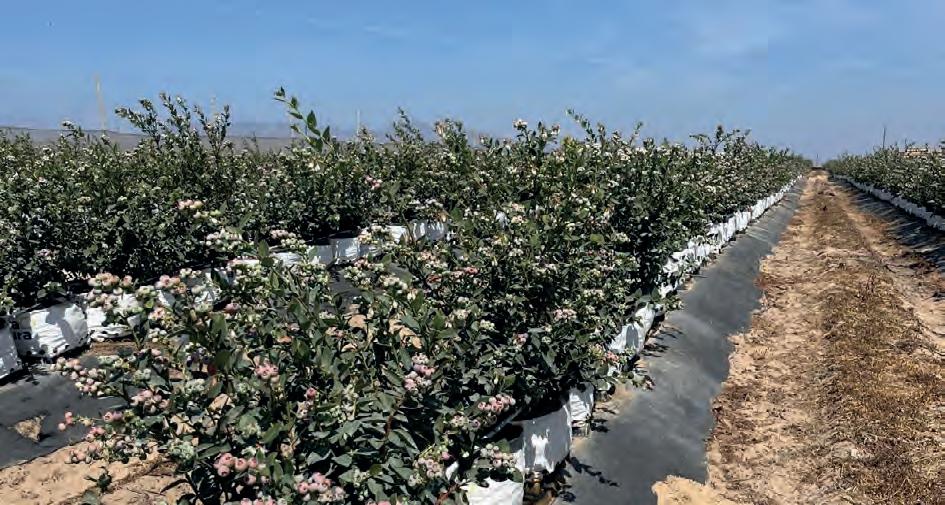
Blueberries in Olmos, Peru

Our Animals
We raise our livestock outdoors
Our sheep, cattle and horses are open-range and grass-fed, grazing on extensive native or seeded pastures, or fodder crops such as kale, beets, lucerne, clovers and vetch.
We raise more than 59,000 lamb and 8,000 calves and 3,950 dairy cows. Our sheep in Australia and New Zealand are mainly Perendale, Romney and Finnsheep crossbreeds, and Merino in Uruguay and Texel/Gotland crossbreds in Latvia. Our beef cattle are mainly black Aberdeen Angus and our dairy cows are Holstein-Friesians.
As part of our regenerative agriculture strategy, we try to integrate animals into crop and seed productions by grazing residues and cover crops, and by using pastures as part of a rotational cropping system. Strategic grazing can stimulate forage photo-synthesis and maintain the natural condition of productive pastures, while herbivores are an integral part of the carbon cycle, contributing to healthy soils.
We believe that pasture-fed livestock systems have multiple benefits, such as higher levels of Omega-3 and vitamins A and E, superior meat flavour, marbling and tenderness.
With balanced breeding that supports the health, feed efficiency, meat and wool quality, we are actively refining our herd genetics for animals that are best suited for our local farm environments.
We follow strict ethical practices on how we treat and handle our livestock to ensure the best animal welfare, and ultimately, the best meat, milk and wool.
Good livestock husbandry needs a dedicated, hands-on team of people living on-site, creating what we call “living farms”. We employ people that have a gentle passion for caring for animals.
26 FARMS WITH ANIMALS
28,600 BEEF CATTLE
7,763
DAIRY CATTLE (milking and non-milking dairy cattle)
64,955 SHEEP
40,572
HECTARES GRAZING AREA
6,153
TONNES MEAT, MILK AND WOOL
Rearing cattle outdoors
For us, animal welfare is always a top priority. We raise healthy and ethically treated animals. Our cattle graze extensive native or seeded pastures all year round.
Our beef production in Argentina, Uruguay, Romania and New Zealand is based on grass. We have chosen the Aberdeen Angus breed due to its original characteristics and because it adapts well to our local environments.
Our beef obtains the proper marbling, offering a high-quality grass-fed meat with the nutritional properties and great flavour that today’s consumers increasingly request.

Assessing and verifying greenhouse gas emissions (GHG) and sequestration associated with livestock production is complex. The fact that we rear beef cattle across so many different lands – plus dairy cows in Australia – adds to the complexity, and there is currently no calculator that can compute this much complexity. In particular, the carbon sequestration calculations and estimations in livestock systems are still developing as research advances in this area. Meanwhile, we use local GHG accounting tools in each country, based on IPPC guidelines as well as local research. Our net emissions per head ranges from 0.15 to 4.99 t CO2e across country and system with our system in Latvia being the lowest. These emissions are averages across beef cattle, dairy cows and sheep, counted as closing stock.
Grazing natural grasslands
In Uruguay, 66% of our land consists of natural grassland, water bodies and woodland. The natural grassland which our cattle roam is part of Rio de la Plata Grasslands. This ecosystem includes thousands of plant species, 450-500 bird species and almost a hundred mammalian species. We graze this land, because grazing is an integral part of its conservation, but we do not interfere with the land in any other way.
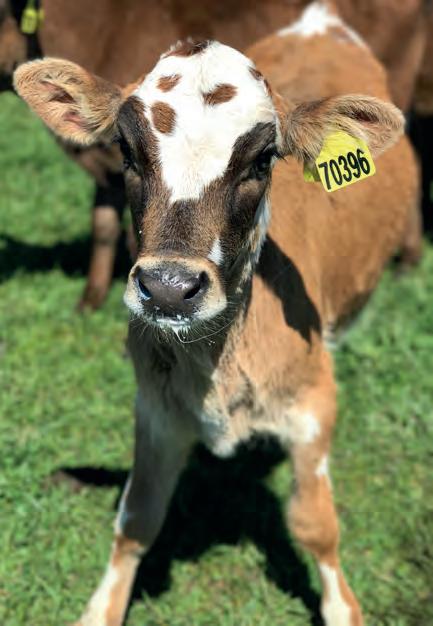
Bobby (male) calves are usually considered a by-product of milk production, but Clovelly is among a handful of farms who choose to raise bobby calves through to 12-18 months for high quality and ethical dairy beef production.
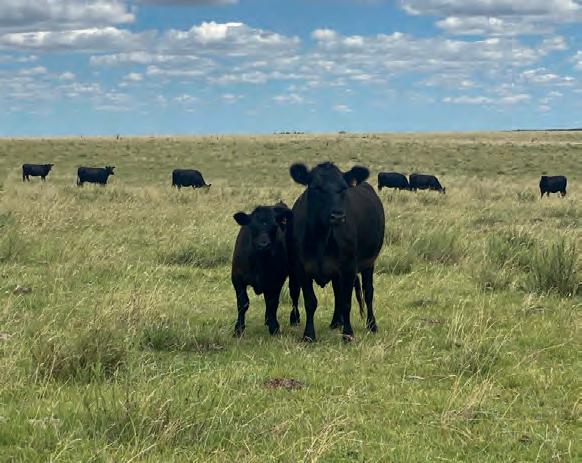
Rearing dairy cows in a no-till system
In Tasmania, our award-winning Clovelly Dairy produces 23.9 million litres of milk annually from a herd of approx. 4,000 Holstein-Friesian cows on 3,575 hectares.
The soil we farm here is a combination of sand and sandy loam. Sand is prone to erosion because of its naturally low organic matter content, with wind being the greatest cause of erosion. Sand also has a low water holding capacity which results in shallow root zones.
To prevent wind erosion, we run permanent pastures in a no-till system. Also, adding organic matter increases the soil’s natural defence against erosion. Therefore, we create compost on-farm by collecting the effluent solids that have been separated at the dairies and the used bark bedding from the calf sheds. Mixing and regular turning of these products, traditionally seen as waste, yields a rich compost that can be applied to areas identified to be at risk of erosion.

Sheep in agricultural landscapes
We raise more than 59,000 lamb in New Zealand, Australia, Latvia and Uruguay. Across all locations, we continuously improve our farming practices to ensure the best possible animal welfare and genetics for healthy and productive animals.
Use of marginal lands
On most farms, we have areas that are less suitable for crop production due to soil conditions, soil type, topography, etc. Some of these areas are well fit for grazing and raising livestock. Other places, the best option is a combination of both cropping and livestock, where livestock is part of the rotation.
Grazing animals inoculate soils with dung and saliva, and there is a wealth of beetles, fungi and other organisms associated with this. Their hooves help incorporate plant residues, and belowground biomass increases together with soil biological activity.
Different breeds for local conditions
In New Zealand and Australia, the abundant water and mild climates allow grass growth most of the year. Our sheep there are mainly crossbreeds of Perendale, Romney and Finnsheep. They are kept open range and graze on pastures all year round.
In Latvia, our sheep are Texel/Gotland crosses. They are kept open range and graze on pasture and on our grass and clover fields most of the year, too, except for the cold Latvian winter season. Our sheep feed on cover crops, crop residues and waste crops that would otherwise be lost.
We have a similar setup in Uruguay, although the breed there is Merinos because they thrive better in the dry conditions. From these sheep we collect the ultra fine merino wool, renowned for its exceptional softness, breathability and natural performance qualities.
Ingleby Farms’ global shearing policy
According to good husbandry standards, we shear our sheep annually. At other times of the year, we do additional limited shearing in the form of crutching and wigging to reduce the risk of flystrike, minimise impairment of vision, and the incidence of stained wool.
We never engage in mulesing (the removal of wool-bearing skin from part of the breech area of the sheep); this procedure is prohibited on all our farms worldwide.



Workhorses in Latin America
Gauchos rely heavily on horses for their daily work. Their horses are more than just transportation; they are trusted partners in managing livestock across our vast grasslands in Argentina and Uruguay. The horses allow gauchos to cover large areas quickly, which is essential for checking and moving cattle. Skilled riding enables precise handling of livestock, especially in open terrain. We use criollo horses, bred for stamina and resilience. They are central to gaucho identity, with deep cultural significance reflected in horsemanship and attire.
Working dogs are essential partners
Herding dogs are specially trained working dogs that help manage livestock such as sheep and cattle. Their natural instincts, intelligence and agility make them invaluable on our livestock farms in New Zealand, Australia and Latvia, where they assist in gathering, moving and controlling animals with precision and efficiency.
The dogs save time and labour by quickly rounding up animals, even across large areas. With their calm and controlled approach, they also help minimise stress in livestock, which can improve overall health and productivity. The dogs even reduce the risk of injury to both farmers and livestock during handling.
Where predators are a threat to our sheep, we also rely on livestock guardian dogs (LGDs). These are large, protective breeds that live with and defend our sheep from predators such as foxes and wolves. Unlike herding dogs, LGDs do not move livestock, they bond with them and act as full-time guardians, making livestock feel secure, which can improve health and productivity.


Livestock guardian dogs in Latvia
Herding dogs in New Zealand
Criollo horses roaming the grasslands
A gaucho’s horse in Uruguay
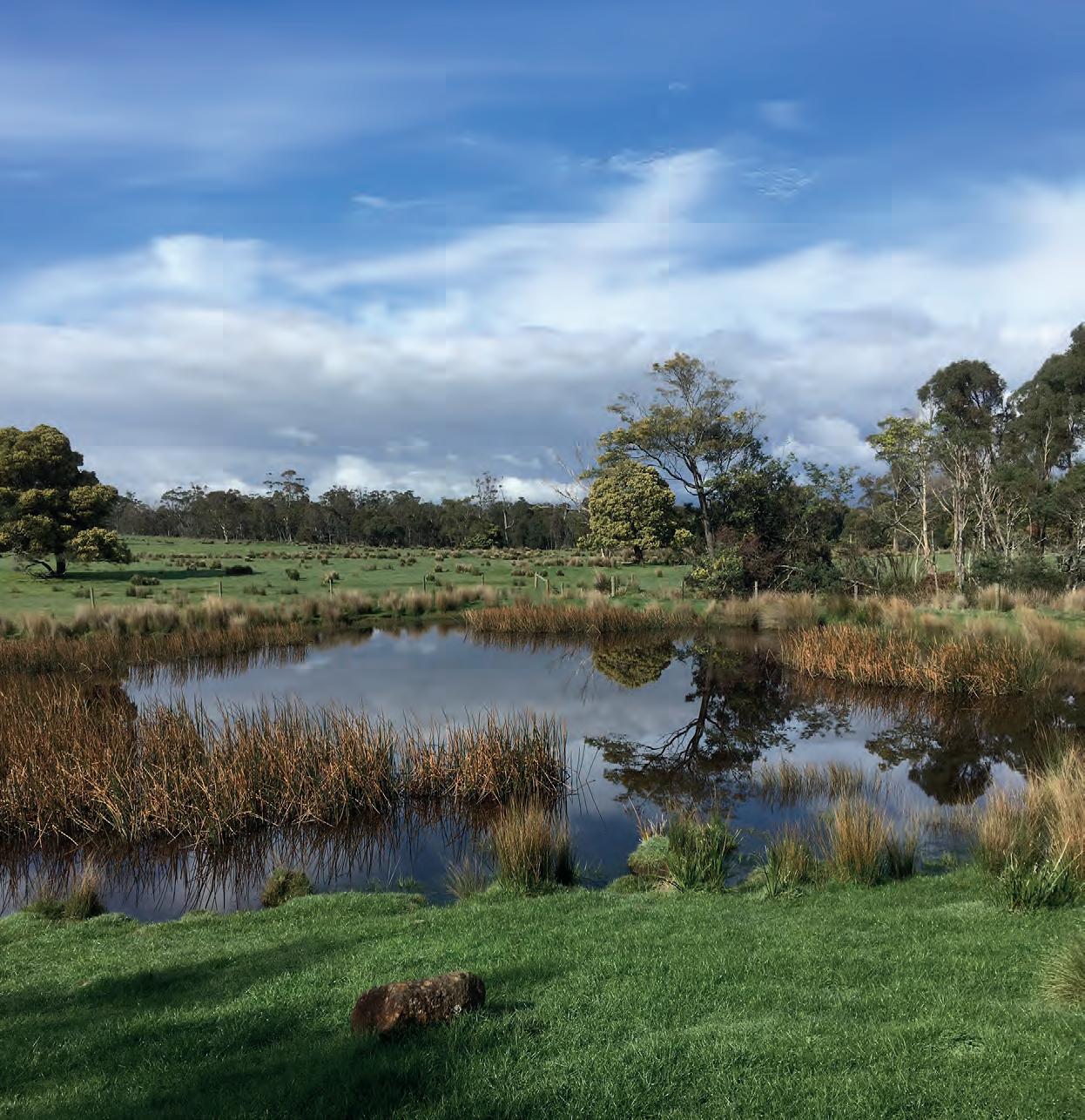
Protecting natural habitats and water
As part of our farming with nature principle, we strive to protect and enhance biodiversity. One way we do that is by designating and protecting areas for natural habitats and water bodies.
Of all our owned land, 31% (32,093 hectares) are designated natural habitat and 2.7% are water bodies. This includes formally protected areas with a land title covenant and areas under our own internal Ingleby protection. Some of these areas are not suited for farming, but most of it we deliberately do not produce on. Such areas include forests, natural grasslands, native bush, wetlands and riverfronts. Protected areas on-farm ensure the maintenance and restoration of core habitat areas which give native species the space they need to thrive. In total, Ingleby Farms has 3,834 hectares of protected areas across our farms and forest which equates to 4% of our total land area.
On our farms we have 2,562 hectares of protected areas which have been designated by external bodies. For example, Natura2000 in Romania and Lithuania, and QEII in New Zealand.
We also designate our own Ingleby Protected Areas (IPAs) for sites that we have deemed significant for environmental, recreational or cultural reasons. IPAs have a management plan as part of their creation which states why the site is important and plans any monitoring or restoration work to be undertaken. As it stands, we have 1,272 hectares of IPAs.
Our freshwater bodies and their surrounding area are the most biodiverse places on our farms. To protect these biodiversity hotspots, we have unfarmed buffer strips next to all major water bodies.
Although we have 31% of our land in habitats, our goal is a more even contribution across farms, so that 10% of each of our farm hubs’ area are natural habitats and 1% water habitats.
17,785
HECTARES NATIVE PASTURES
10,193
HECTARES OF WOODLANDS
2,562
HECTARES OF EXTERNAL PROTECTED AREAS
31%
INGLEBY’S LAND IN NATURE
1,272
HECTARES OF INTERNAL PROTECTED AREAS
9,430
HECTARES OF PRODUCTION FOREST
Landscape tools
For generations, farmers have strived for efficiency in their field work, thereby creating homogenous production areas. Nature, on the contrary, always seeks – and creates – diversity.
With landscape tools, we seek to mimic nature’s diversity in the landscape by gently moulding our fields and semi-productive areas. For example, by adding a curve to a creek, scraping a soil surface to create a shallow lake or by simply leaving a pile of rock or branches and leave them untouched to prosper into a lively habitat for insects, critters and birds.
Landscape tools have many benefits. They increase biodiversity and play an important role in soil conservation, preventing erosion, enhancing soil structure and promoting water retention.

On top of that, they provide more complex interactions between natural habitats and the productive farmland. Promoting this kind of connectivity offers benefits to both production and conservation. Beneficial insects are a great example; they might live and reproduce in the habitats, but because the habitats are increasingly connected to the productive areas, they “service” those areas by feeding on pests or by pollinating crops.
Simply put, landscape tools are great instruments to enable and support healthier farm ecosystems.
Contour banks
In Uruguay and Argentina, we are using contour landscaping in our cropped fields to improve rainfall usage. Shallow berms of soil are added on the field to obstruct the natural path of run-off water. Not as dramatically as a dam would do it, but the berms cause the water to be gently derailed, slowing it down so that much of the water soaks into the ground instead of rushing off. This yields two great benefits: more water is absorbed in the soil, and less field erosion occurs, which is always a risk when water rapidly rushes over soil.

Contour banks in canola field in Uruguay
Contour banks in corn field in Uruguay
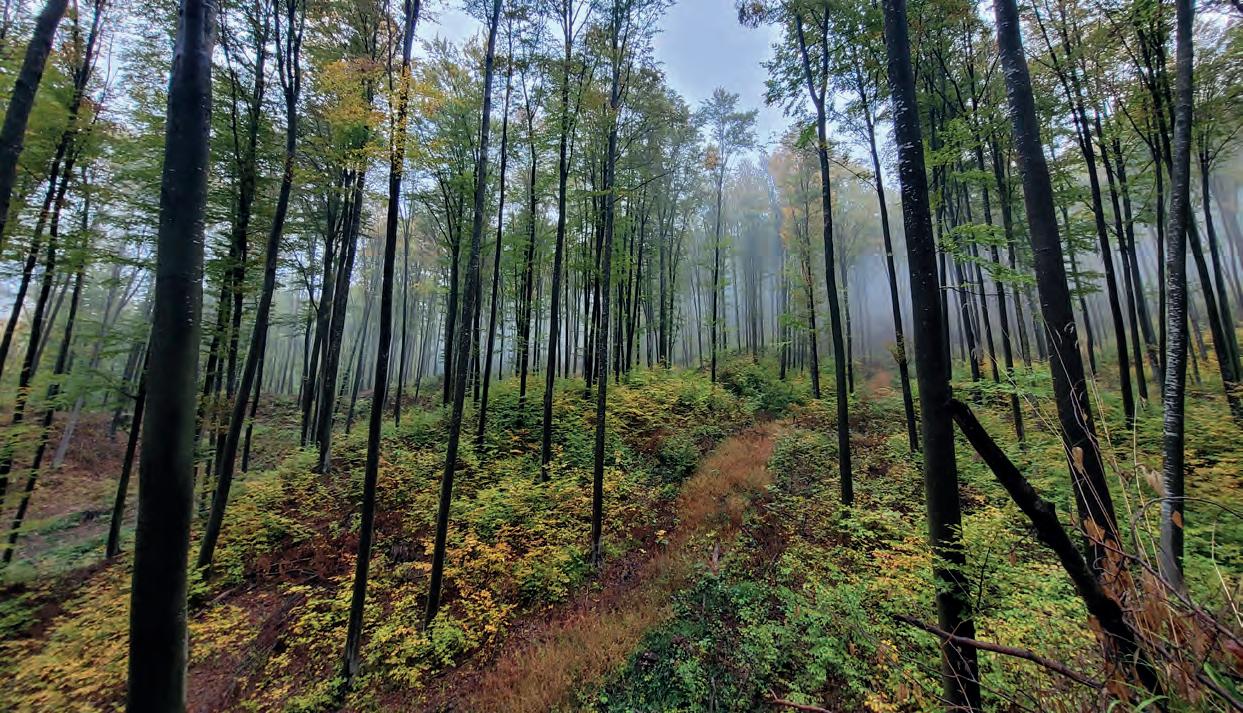
Naturally regenerating forests
In accordance with the highest professional and environmental standards, we sustainably manage our three Romanian natural forests, totalling 8,279 hectares. Beech, oak, lime, spruce and hornbeam make up almost 90% of our forest but we have a remarkable mix of over 20 tree species, thus the forests are more valuable and resilient to climate change.
Forest management
In general, our forests in Romania are old. Almost a third of the trees are between 81 and 100 years old, with their main cutting not for another 30 to 40 years. In the meantime, our main task is to thin the forests, so that we improve the quality and species composition, and over time create more valuable and biodiverse forests.
We promote valuable trees, support ecosystems and biodiversity through progressive cuttings and natural regeneration, which maintain a favourable balance between young and mature forest.
This also strengthens the stability, vitality and resilience of the forests to climate change. We do plant a few new trees in areas where forest does not currently exist or areas where natural regeneration has been slow. In general, we follow internationally recognised standards for responsible forest management.
Harvesting trees
We do not use intensive harvesting and we never make clear cuts. We only remove the mature trees in a stand once it is fully populated with new young trees (this process takes about 30 years).
We protect very large and old trees, that are usually rotten inside. They are of prime importance for specialised forest flora and fauna and help enhance the biodiversity of our forests.

Our Communities

Safety first
Farming can be dangerous. Hence, the safety and well-being of our employees is our main priority. Providing safe work environments for our teams is our most important responsibility.
One of our major goals is a zero harm work culture. However, during 2024/25, we had 23 accidents and 35 near misses. Our LTIFR (lost time injury frequency rate) for the reporting period was 5.11, compared to 3.47 for the prior period. Our teams report on accidents, but also on near misses. We continuously monitor and analyse the incident data to assess where we should direct efforts and resources to reduce risk. This work will continue unaffected.
More than 50% of the accidents happened in Peru, primarily related to the harvesting of avocados where tall trees complicate harvesting with the risk of falls and slips. To mitigate these risks, we are adjusting tree heights and implementing more mechanical equipment for field operations.
Professional training, daily safety meetings and constant monitoring by managers and supervisors continue to be an integral part of our daily activities on all farms. For 2025/26, we will revitalise a previously successful concept: safety minutes published on our intranet. These short videos increase awareness and give instructions on a specific topic to ensure our team is in line with safety procedures.
We will also introduce bi-annual global safety meetings with the aim of sharing safety initiatives for inspiration across locations. Also during 2025/26, we will continue training of management and commence 360-evaluation of our country managers. We will also re-commence talent development seminars as an integral part of our general talent development.
2,968
TOTAL EMPLOYEES
745 FULL-TIME EMPLOYEES
29% WOMEN
35 FAMILY-OCCUPIED FARMS
1.5% TIME SPENT IN TRAINING
5.11
LTIFR (LOST TIME INJURY FREQUENCE RATE)
Supporting our communities
Across our farm locations, we support our local communities by engaging in various projects that help elevate education, sports, cultural activities and community work. We believe these projects add value and have a positive impact on the local communities and people.
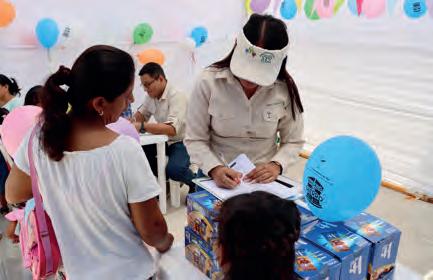
Peru
Donations and activities centre around schools receiving backpacks and other relevant study material. We also invite pupils to visit our farms to get introduced to farming activities. This includes employee family visits to show family members the nature of farm work. In addition, we support native animal conservation programs as well as study programs in natural environments.


Argentina
We support the internet costs for a local school close to San Ignacio farm. We also collaborate with an association working to prevent and treat malnourished children. Other projects relate to improving roads, projects at local schools as well as UNICEF fundraiser for local education.
Community event in Peru promoting education for children
Community event in Peru about nutrition
Community event in Argentina to prevent malnourished children
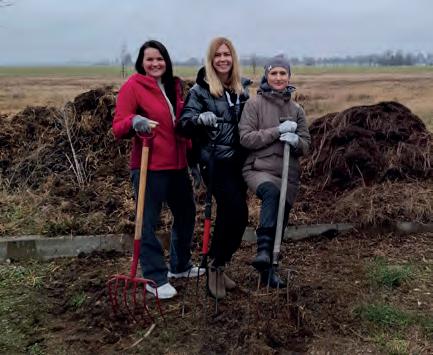
Latvia and Lithuania
Our Baltic donation program primarily focuses on schools, education and rehabilitation programs for vulnerable children. In Latvia, we also work closely with the veterinary university by taking on several internships annually.
In Lithuania, our team members dedicated a full day to our annual spring clean-up day.
Australia and New Zealand
Due to our diversity and geographically dispersed farm locations in Australia and New Zealand we support varied projects e.g. support to schools, agricultural education, sports events and health & wellbeing events. Many projects take place on our farms, giving students opportunities to get acquainted with the life of farming.

Romania
We support local schools with stationary, food and medical treatment.
United States
The main part of our donations goes to student scholarships and education. We also support local wildlife conservation.
Uruguay
All donations are allocated to support schools ain the rural areas.

Successful owl project in United States with nesting boxes throughout orchard
Interns in Latvia get hands-on experience in the pastures
Clean-up day in Lithuania
Caring hands
We follow strict ethical practices on how we treat and handle our livestock to ensure the best animal welfare, and hence we employ people who have a gentle passion for caring for animals. Good livestock husbandry needs a dedicated, hands-on team of people living on-site, creating what we call “living farms”.
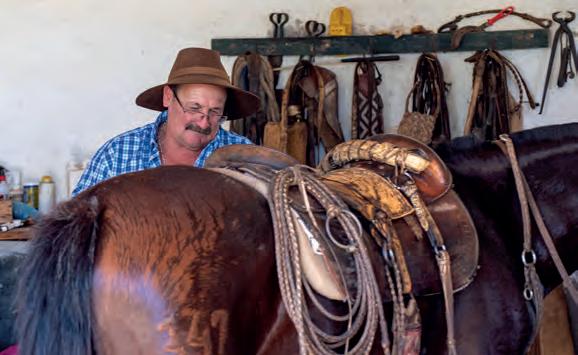
On our farms in Argentina and Uruguay, we employ several teams of gauchos, who play a central role in caring for our cattle and sheep. Gauchos are skilled horsemen and livestock herders, often closely connected to their horses who they care for and depend on. In respect for their horses, the gauchos style them with personalised harnesses.
The gaucho lifestyle is rooted in the vast grasslands and is defined by freedom, horsemanship and a deep connection to the land. Living a rural life on our ranches, their days revolve around tending to livestock while riding across the pampas.
Their distinctive attire is part of the gaucho culture: wide-brimmed hats, baggy trousers and practical, yet comfortable boots for a full day on horseback.


Proper placement of saddle is important for horse comfort
Mid-day watering, rinsing and grooming
Moving a small herd across terrain
Housing facilities
Some of our crops are more labour intense than other. Especially berries and fresh fruit require gentle handling because they are fragile and delicate. Therefore, during peak season of pruning and harvesting in our orchards, we rely on seasonal workers for pruning, handpicking and sorting. They often travel from afar, so good accommodation is important
Ingleville at Campo D’Oro, Romania
This housing village consists of 170 house units, each containing sleeping area, bathroom and kitchenette. All units are air-conditioned for comfortability. The village is conveniently located close to the blueberry fields with a well-designed layout of green areas, trees and open spaces for sports and social activities.
Services offered in the village include a grocery store, laundry services and a canteen for lunch meals every day. Being the largest “town” in the local area during peak season, the village is a vibrant, yet safe, place for everyone. 45% of the seasonal workers are women. Every day, we offer transportation to and from the fields, but also to the local cities on the weekends. Typically, 15-20% of the seasonal workers leave the village during weekends.
Ingleville is fully occupied for 4.5 month a year, covering both pruning and harvesting of blueberries. The village is highly appreciated by the seasonal workers, resulting in a return rate of 70-80% for the following seasons.
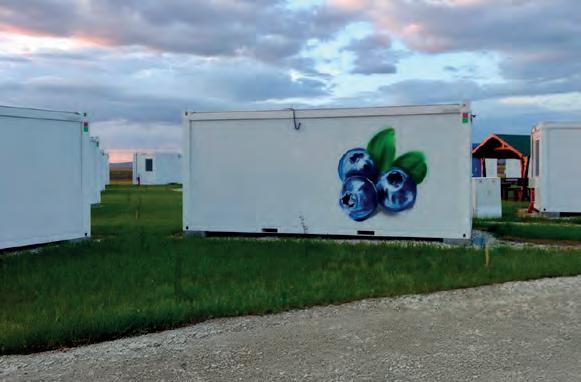
Alta Vista at Olmos, Peru
In Peru, we grow avocados, table grapes and blueberries which all need gentle handling. With their seasons being staggered, we rely on seasonal workers during several periods, so some stay on a permanent basis.
Only a few years old, Alta Vista has the capacity to house 320 people. Currently, approx. 20% are women. The housing area offers a canteen with lunch served daily. As an added benefit, we subsidise part of the food. The housing area also offers sports facilities such as soccer fields and fitness rooms. To create a relaxing and pleasant living space, but also to protect the village from dust, trees and flowers are planted throughout the campus.
Despite the volatile nature of the seasonal labour market, we see 70-80% of staff returning. We believe our new facilities will make it even more attractive for seasonal staff to return.

Alta Vista campus, Peru
Decoration on backside of Ingleville house unit, Romania

Our Climate
Positive aspirations
As owners and stewards of the land it is our full responsibility to act and create change in how we farm to not only reduce and mitigate emissions, but lock carbon back into our soils, trees and plants.
We believe that farming is at a crossroad where the time is now to create positive change and turn a corner towards new ways of farming, thinking, adapting.
In 2019, we launched a cornerstone goal for a better future for farming: aiming for climate positive farms. This means our farms strive for positive net effects on the climate by drawing down and storing more CO2-e than they release.
Challenges
However, the challenges we face are many. Our most immediate hurdle is completing a company-wide greenhouse gas (GHG) inventory of scopes 1, 2 and 3. Our diversity across countries and productions (growing 37 crops, meat, wool, dairy and timber, plus integrated arable and grazing farms) has created a labyrinth of accounting pathways, data and benchmarking that we are working through. The process is also impeded by the lack of internationally agreed carbon accounting standards for farming, plus emerging science to support modelling of CO2e – especially with soil and pasture sequestration.
Opportunities
Along the journey of measuring our production footprints, we are learning much about the interplay of carbon, soils, animals and nature. By creating GHG assessments of our major crops in the Cool Farm Tool, our farm managers are gaining insight into what generates most emission within their production. They can also see how their soil management through reducing tillage, cover cropping, diversifying rotations and planting trees drives carbon sequestration.
74%
GLOBAL ELECTRICITY CONSUMPTION IS RENEWABLE 4
3.03
MILLION KWH SOLAR ELECTRICITY GENERATED ON OUR FARMS
5.9%
GLOBAL DIESEL USE IS BIODIESEL
312
KG CO2-E / HA FOR ARABLE CROP
2,758
KG CO2-E / HA FOR HORTICULTURE
4 Location-based method used
Renewable energy
Agriculture uses energy in the form of fuel, natural gas and electricity to operate farm machinery and equipment, to dry grain and cool fresh produce. At Ingleby Farms, we are acutely mindful of our energy consumption, embracing as much renewable energy as possible.
Across all our farms’ and offices’ electricity consumption (scope 2), 74%5 is sourced renewably, including 3.03 million kWh of solar power generated on our own farms. In some of the regions where we farm, the national energy grids are mostly comprised of renewable energy sources. For example, most of the electricity used in Tasmania, Uruguay and New Zealand comes from hydro and wind power.
Energy use
We measure our energy use to continuously improve the environmental performance of our production systems.
In 2024/25, we used a total of 293,526 gigajoules (GJ) of energy. This amounts to 3.26 GJ/ha, and an energy intensity of 0.80 tonnes produced per GJ. The majority of energy spent directly on our farms is in the form of diesel (54%) followed by electricity (32%) and natural gas (8%).
Irrigation is particularly energy intensive, responsible for 72% of our global electricity use. Diesel use is traditionally high in cropping systems. We aim to reduce this by moving towards minimum tillage, or no tillage, incorporating more pastures into rotations and upgrading old diesel-powered drying systems. Many of the fuel-powered machines we use today are with the newest technology to reduce fuel consumption and minimise emission.
Energy use efficiency
We want to increase our energy use efficiency, measured as yield (tonnes) per GJ, by 2% per year. However, our energy efficiency has been decreasing by 1% per year as an average over the last six years due to our focus on soil improvements, major construction and developments, increased irrigation, pistachio processing as well as grain drying. We have also increased our production of seeds, which yield much less volume than other types of crops.

Solar panels at Dobele Agro, Latvia
Greenhouse gas emissions
Our total gross emissions are 207,537 t CO2e, net emissions are 143,417 t CO2e.
Pastoral production is responsible for 69% of our gross GHG emissions, while cropping account for 23% and horticulture for 7% of total emissions.
Our greenhouse gas footprint in our arable crops is 312 kg CO2e/ha, which is a 55% reduction in crop net emissions compared to the benchmark (average of the two seasons 2019/20-2020/21). Combined horticulture net emissions were 2,758 kg CO2e/ha, which is a 48% reduction compared to the benchmark.
To complete our internal Scope 3 accounting, we need to include emissions from employee commuting and business travel. Also, not all biogenic removals have been captured. Data is limited to areas where we have accurate data on forest growth, afforestation, or land management changes over time.
Carbon emissions:
Scope and methodology
As a natural part of our sustainability reports, we calculate our carbon emission using the Cool Farm Tool® and local emission calculators.
We have defined our operational boundaries for responsibility of direct and indirect emissions, according to recommendations from The GHG Protocol Agricultural Guidance.
We report all scope 1 and 2 emissions. From scope 3 emissions, we include the transport of goods to the farm and synthetic fertiliser production. We do not include transport and freight of our produce to end destinations beyond our farm gates.
GHG EMISSIONS SUMMARY
Striving to do right
Ingleby Farms operates in many countries, some of which are perceived to have a medium to high risk of corruption. We are committed to conducting our business in an honest and ethical manner. We work against corruption in all forms, including extortion and bribery.
Ethical policy
We abide by our Ethical Policy, Anti-Money Laundering and Anti-Corruption Policy and Supplier’s Code of Conduct. Together, these constitute our Code of Business Conduct. We require our employees and business partners to comply with the Ingleby Code of Business Conduct and to report any violations or suspected breaches. This is supported by our online whistleblower system allowing for full anonymity.
We investigate all submissions thoroughly, take appropriate actions and report any breaches to the Board of Directors. We ensure there is no retaliation against people who report alleged breaches of the Code of Business Conduct.
We have a zero tolerance towards breaches of our Code of Business Conduct. For 2024/25, we are proud to report no breaches of ethical conduct, no production and sustainability breaches and no IT security breaches.
Labour standards and human rights
We support and respect internationally recognised labour standards and human rights. We fulfil our legal obligations and offer reasonable terms on pay, pension, sick leave, holidays and notice periods. We do not use any form of forced or compulsory labour, and we do not use child labour. We uphold the freedom of association and the right to collective bargaining.
Our main risks related to human rights are found within our supply chains. To mitigate these risks, we asked all new suppliers to sign and adhere to our Supplier’s Code of Conduct, which includes our expectations and minimum standards for labour and human rights. Again in 2024/25 we have not experienced any human rights violations on our farms or to our Supplier’s Code of Conduct.
Equal opportunities
We oppose all forms of discrimination, and recruit employees regardless of age, race, gender, nationality, religion, sexual orientation or other personal diversity indicators. We are equal opportunity employers, and we want to create equal and fair working atmospheres welcome to all.
We monitor the gender ratio of our teams. Our target is for the underrepresented gender to reach at least 40% by 2029/30 at all levels in the organisation. Women are currently the underrepresented gender, making up 29% of our total employees and 29% of the Board of Directors.
This report is based on the combined worldwide data relating to harvests of the financial year from 1 July 2024 to 30 June 2025.
All production and social data reflect the harvests of the 2024/25 financial year, although for some regions, these data reflect activity occurring during 2023/24.
We use science-based indicators for production, resource use efficiency, employee health and safety, and community outreach – all to promote good governance, sustainable production and to reduce risks.
With this report, Ingleby Farms & Forests ApS reaffirms its support of the Ten Principles of the United Nations Global Compact in the areas of Human Rights, Labour, Environment and Anti-Corruption.
In this, our eleventh annual Communication on Progress, we describe our actions to continually improve the integration of the Global Compact and its principles into our business strategy, culture and daily operations. We are also committed to sharing this information with our stakeholders.
FARMING WITH NATURE 2024/25
1. edition
Ingleby Farms & Forests ApS Slotsgade 1A 4600 Køge Denmark www.inglebyfarms.com
CC BY-NC-SA 4.0 © 2025
Ingleby Publications are licensed under a Creative Commons Attribution-Non-Commercial-Share-Alike (CC BY-NC-SA 4.0) License. This means you are free to copy, distribute, display, and make derivative works, but you are not allowed to use our materials for commercial purpose and all derivative works must be licensed under the same terms. For further information, please visit the Creative Commons web page: www.creativecommons.org/licenses
Design
BGRAPHIC
KLS PurePrint

Please compost or recycle this publication
True to our vision, we have produced this publication using cradle-to-cradle certified paper and ink, which means that all materials – except the staples – are fully biodegradable and can safely enter circular systems without any harm to living beings or the environment.
We kindly ask you to honour our efforts by either composting or recycling the publication. It means a lot to us. Please remember to remove the staples.
Thank you.
Ingleby Farms & Forests ApS Slotsgade 1A, 4600 Køge, Denmark. CVR 35868062
